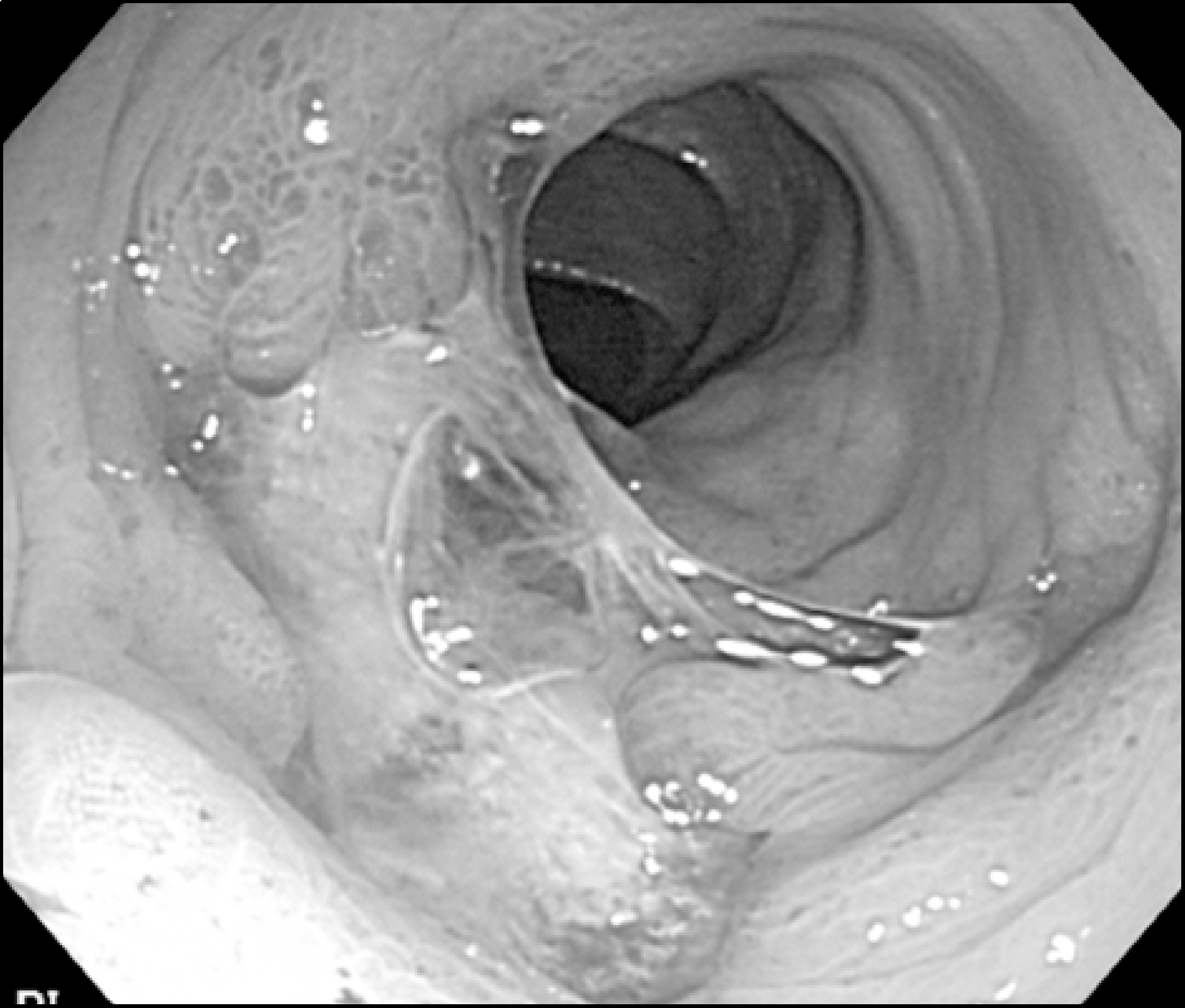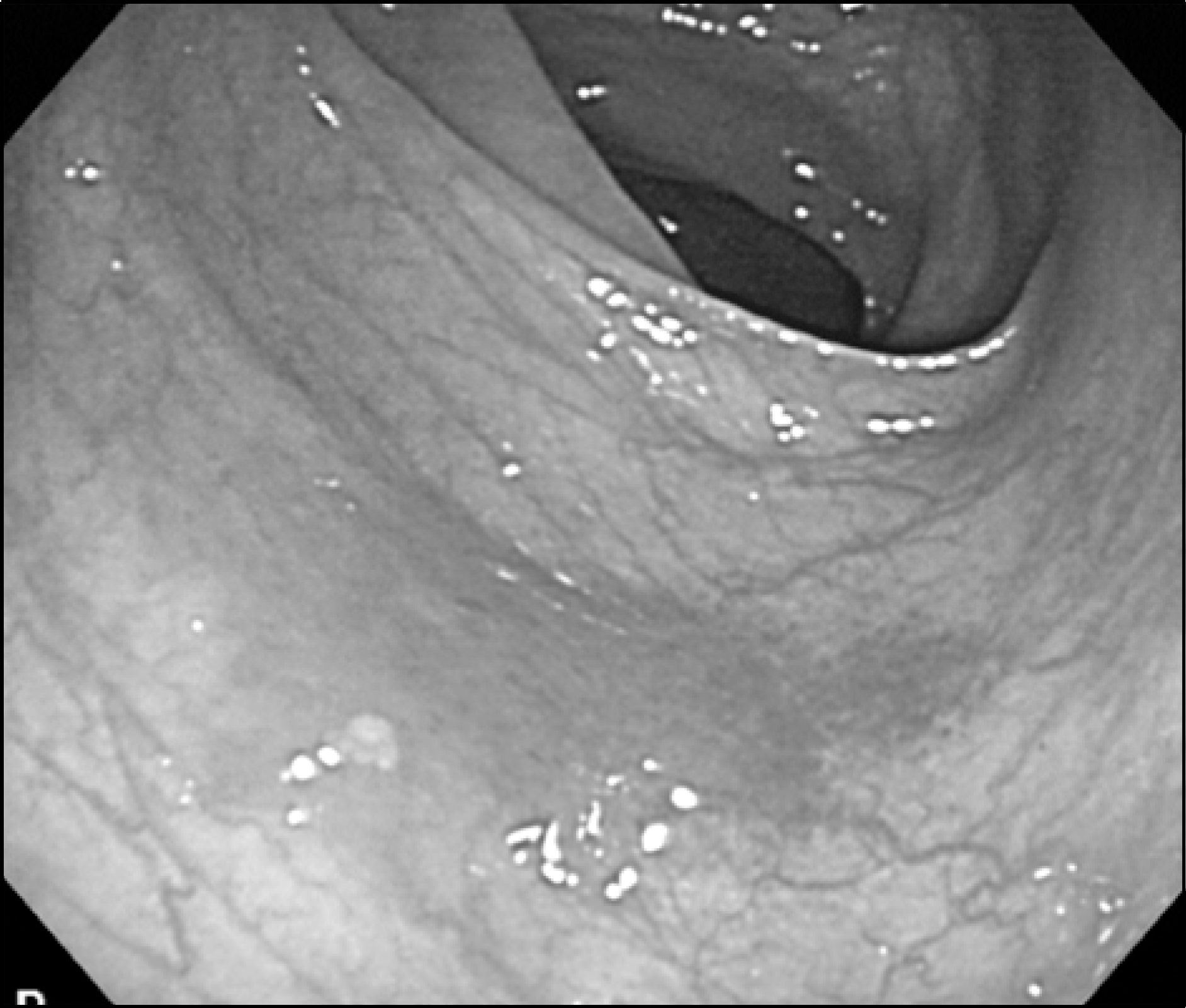Abstract
Invasive aspergillosis needs to be paid extra attention to these day since chemotherapy and stem cell transplantation bring about immune suppression. The lung is the main portal of entry and once involved, invasive aspergillosis may be delivered by hematogenous spread into the central nervous system, liver, spleen, gut and adrenal gland. However infections through the gastrointestinal track are not common. In these cases, abdominal pain and diarrhea can be the major symptoms and amphotericin B is the treatment of choice. We report here on a patient with untreated acute myeloid leukemia who suffered from bloody diarrhea without any lung lesion; this patient had ulcer close to cecum on colonoscopy, and then he was diagnosed as suffering with aspergillosis with H&E staining and PAS staining on the biopsy specimen.
Go to : 
REFERENCES
1). Denning DW., Evans EG., Kibbler CC, et al. Guidelines for the investigation of invasive fungal infections in haematological malignancy and solid organ transplantation. British Society for Medical Mycology. Eur J Clin Microbiol Infect Dis. 1997. 16:424–36.
2). Denning DW., Stevens DA. Antifungal and surgical treatment of invasive aspergillosis: review of 2,121 published cases. Rev Infect Dis. 1990. 12:1147–201.

3). Kami M., Hori A., Takaue Y, et al. The gastrointestinal tract is a common target of invasive aspergillosis in patients receiving cytotoxic chemotherapy for hematological malignancy. Clin Infect Dis. 2002. 35:105–6.

4). Prescott RJ., Haboubi NY., Burton IE. Gastrointestinal tract aspergilloma: possible cause of mlabsorption. J Clin Pathol. 1994. 47:170–1.
5). Young RC., Bennett JE., Vogel CL., Carbone PP., DeVita VT. Aspergillosis: the spectrum of the disease in 98 patients. Medicine (Baltimore). 1970. 49:147–73.
6). Hori A., Kami M., Kishi Y., Machida U., Matsumura T., Kashima T. Clinical significance of extra-pulmonary involvement of invasive spergillosis: a retrospective autopsy-based study of 107 patients. J Hosp Infect. 2002. 50:175–82.
7). de Medeiros CR., Dantas da Cunha A Jr., Pasquini R., Arns da Cunha C. Primary renal aspergillosis: extremely uncommon presentation in patients treated with bone marrow transplantation. Bone Marrow Transplant. 1999. 24:113–4.

8). Prescott RJ., Harris M., Banerjee SS. Fungal infection of the small and large intestine. J Clin Pathol. 1992. 45:806–11.
9). Weingrad DN., Knapper WH., Gold J., Mertelsmann R. Aspergillus peritonitis complicating perforated appendicitis in adult acute leukaemia. J Surg Oncol. 1982. 19:5–8.
10). Ansorg R., van den Boom R., Rath PM. Detection of aspergillus galactomannan antigen in foods and antibiotics. Mycoses. 1997. 40:353–7.
Go to : 




 PDF
PDF ePub
ePub Citation
Citation Print
Print





 XML Download
XML Download